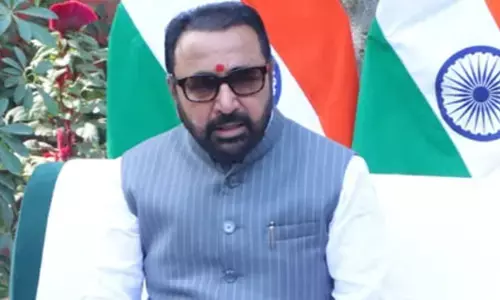Blackouts light up solar business

Blackouts light up solar business, The solution being flaunted by urbanites is on-grid power coupled with solar energy generation which is enough to recharge those dried-up inverter batteries in the long Indian summers when blackouts are frequent.
Frequent power blackouts, which cause anxiety about the longevity of that inverter battery which might run out any time leaving one at the mercy of heat, mosquitoes and sweat, have unintentionally heightened interest in home solar power generation as a secondary source for emergency power in urban areas.
The solution being flaunted by urbanites is on-grid power coupled with solar energy generation which is enough to recharge those dried-up inverter batteries in the long Indian summers when blackouts are frequent.
Though a concept widely used by educational, hospitality and industrial units, a home-based single-panel solar back-up power plant or a one-off micro wind turbine is becoming not just a green symbol but a fashion statement for modern home and flat owners in Indian cities.

"There are people now who are ready to experiment with this technology. It (solar) cannot provide an absolute answer to all the enegry needs of a modern home but is an excellent option for recharging back-up power batteries and invertors," says Vivek Chaturvedi, chief marketing officer of Moser Baer Solar.
"With a small solar system a single household can save and generate up to five units of electricity. This is enough for recharging invertor batteries or any other storage devices," he added.
Moser Baer and Tata Power Solar are engaged in developing and selling these power solutions with financing options. But wait, what if solar coupled with wind power starts powering flats? Yes flats, that too in cities not in hill stations? Enter the micro wind turbines coupled with single solar panels synchronised with the power grid.
"Incidentally, the small wind turbines and solar panels complement each other. During the monsoon, when solar power is virtually halved, wind power grows to double its strength. In summer, both work at almost same levels," according to Rajarshi Sen, director and chief executive of Pune-based Luminous Renewable Energy.
According to Rays Expert, a solar-power based company, 70 per cent of the cost goes for solar panels and the balance for the accessories used in installation. "In all, a system currently costs around Rs72-75 per watt depending on the size and location of the installation. Out of this, Rs45 goes for the panel and Rs 20 for other equipment. The amount of electricity produced is the saving from such systems. Ideally per unit cost to the consumer these days is around Rs 5-7 per unit," said Rahul Gupta, director, Rays Experts. Calculating the benefits on an average investment ranging from Rs 50,000 to Rs1,00,000 for a solar panel and accessories will provide a flat with a minimum of five units of electricity per day, if the panel is completely south facing with no shadow area.
On an average a household consumes more than 250-300 units per month costing nearly Rs 6-7 per unit in urban India.
"A system worth Rs 70,000, can fetch on an average savings of Rs 10,000 per month. This saving is expected to go up as electricity from grids are expected to go up with time," says Santosh Kamath, solar energy expert at KPMG.
However, if you are planning to install a solar panel at any given instance, check first with your state policy, as many states still only provide financial relief to mega solar installations. But the trend is changing with many state governments, like Delhi, introducing schemes such as net-metering system which allows excess power generated to be sold back to the grid. Environmentalists have given this a thumbs-up.
"One thing that's noticeable is that in the last two years, almost every state has come out with a rooftop policy. That shows all the policymakers are convinced that rooftop solar is the answer to the urban energy crisis," says Greenpeace India campaigner Prabu Pathanjali.
"Energy security is a direct effect and environment conservation is an indirect effect. What if cities themselves produce a per cent of their consumption and rooftop solar is one such efficient way to at least get 15-20 percent energy independence?” he adds.















